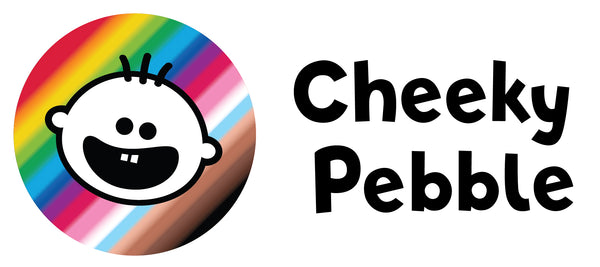The Evolution of Valentine's Day: From painful ancient rituals to commercialism
Whether you love it or hate it, Valentine’s Day is here to stay. February 14th is a day synonymous with romance, hearts, flowers, and sweet declarations of love. And seriously, with all the division in the world right now, a day to share some love with your special ones is actually kind of necessary. But how did this celebration of affection come to be?
Ancient Roman Beginnings: Lupercalia and Fertility Festivals*
The roots of Valentine's Day are actually kind of unpleasant and can be traced back to ancient Rome and the Pagan festival of Lupercalia. It was held in mid-February and was a violent and sexually charged affair. This crazy celebration is believed to have honoured Lupercus, the Roman god of fertility. It included a feast, animal sacrifices (one or more male goats, which represent sexuality, and a dog), random matchmaking and coupling (um yes, it is what you’re thinking) and the most bizarre ritual of all, running around and whipping women with strips of the sacrificed goat’s hide. That was believed to cleanse the body and promote health and fertility in women. Ouch! I’ll take some traditional flowers and chocolate, please!
Fun Fact: We still use symbols from Lupercalia: The colour red which represented the blood sacrifice, and the colour white which signified the milk used to wipe off the blood (which itself represented new life and procreation).
Christian Conversion: The Feast of Saint Valentine
Previous to the spread of Christianity across Europe, Christians were persecuted and executed, including several clergymen named Valentine. No one knows for sure which ‘Valentine’ the day is in honour of (it was a popular name back then) but the most likely was a priest who had been imprisoned and later beheaded by Roman Emperor Claudius II (3rd century). Claudius had noticed his army of young men were lacklustre, homesick and missing their families, so to keep ‘love’ from affecting his army’s morale and spirit, he banned marriage! Enter our favourite Father Valentine, who defied the emperor and his unjust ban, and was imprisoned for secretly marrying couples. On February 14th, he was beheaded and two centuries later, Pope Gelasius I forbade participation in Lupercalia and declared February 14th the Feast of Saint Valentine to honour all the Valentine martyrs. Saint Valentine became the patron saint of lovers and the association of Valentine's Day with love and romance began.
Fun Fact: It’s highly unlikely Pope Gelasius I intended the Feast of Saint Valentine to commemorate love and passion. In fact, Christians are told not to celebrate Valentine’s Day by some modern biblical scholars since it’s most likely based on pagan rituals.
Literary Romance: Chaucer and the Tradition of Courtly Love
It wasn't until the Dark Ages (they really needed some love and light back then, ha!), that Valentine's Day truly became a day to celebrate romantic love. The notion of courtly love, popularized in literature by Geoffrey Chaucer and other poets, romanticized the ideal of chivalry and devotion. Chaucer's poem "Parlement of Foules" linked the feast of Saint Valentine with the mating season of birds, further cementing the association of February 14th with love and courtship.
The Age of Romanticism: Valentines get mass-produced
By the 18th century, Valentine's Day had become a popular tradition across England and Europe, especially among the Romantics who cherished expressions of emotion and sentimentality. Handwritten notes, known as "valentines," adorned with lace, ribbons, and intricate designs, were exchanged between sweethearts as tokens of affection. The Industrial Revolution brought mass-produced valentines, making the holiday more accessible to people of all social classes, while also fueling the romantic ideals of the era.
Fun Fact: The Industrial Revolution quite dramatically altered the way people express affection. With the onset of mass paper production, greeting cards were affordable, convenient and probably held a level of prestige so a movement away from personalized, handmade notes was only natural.
Commercialization and Globalization: Valentine's Day Goes Mainstream
The 19th and 20th centuries saw massive commercialization and monetization of Valentine's Day. Chocolatiers, florists, greeting card companies and more have capitalized on the sentimentality, producing an explosion of products with romantic imagery and heartfelt messages. It was traditionally reserved for couples who celebrated with romantic evenings and exchanging of gifts and it was locked in as the holiday of love.
Today, Valentine’s Day is celebrated worldwide with inclusive celebrations for couples, kids and singles alike. Despite its commercialization, Valentine's Day can be fun, and celebrating those we love will never go unnoticed. It reminds us to take a minute to appreciate who we have in our lives and to share some hugs and smooches with them. Bring on the dopamine and oxytocin, please!
Whether you like Valentine’s Day or not, this legacy of love has transcended centuries and thankfully, in my opinion anyway, the beautiful tradition of exchanging love notes survived. So as you enjoy Valentine's Day festivities this year, think of the unique history that helped shape this ‘beloved’ holiday. And quite frankly, let’s be thankful it has evolved, I’m not down for a whipping, thank you very much!



1 comment
Super interesting!!!